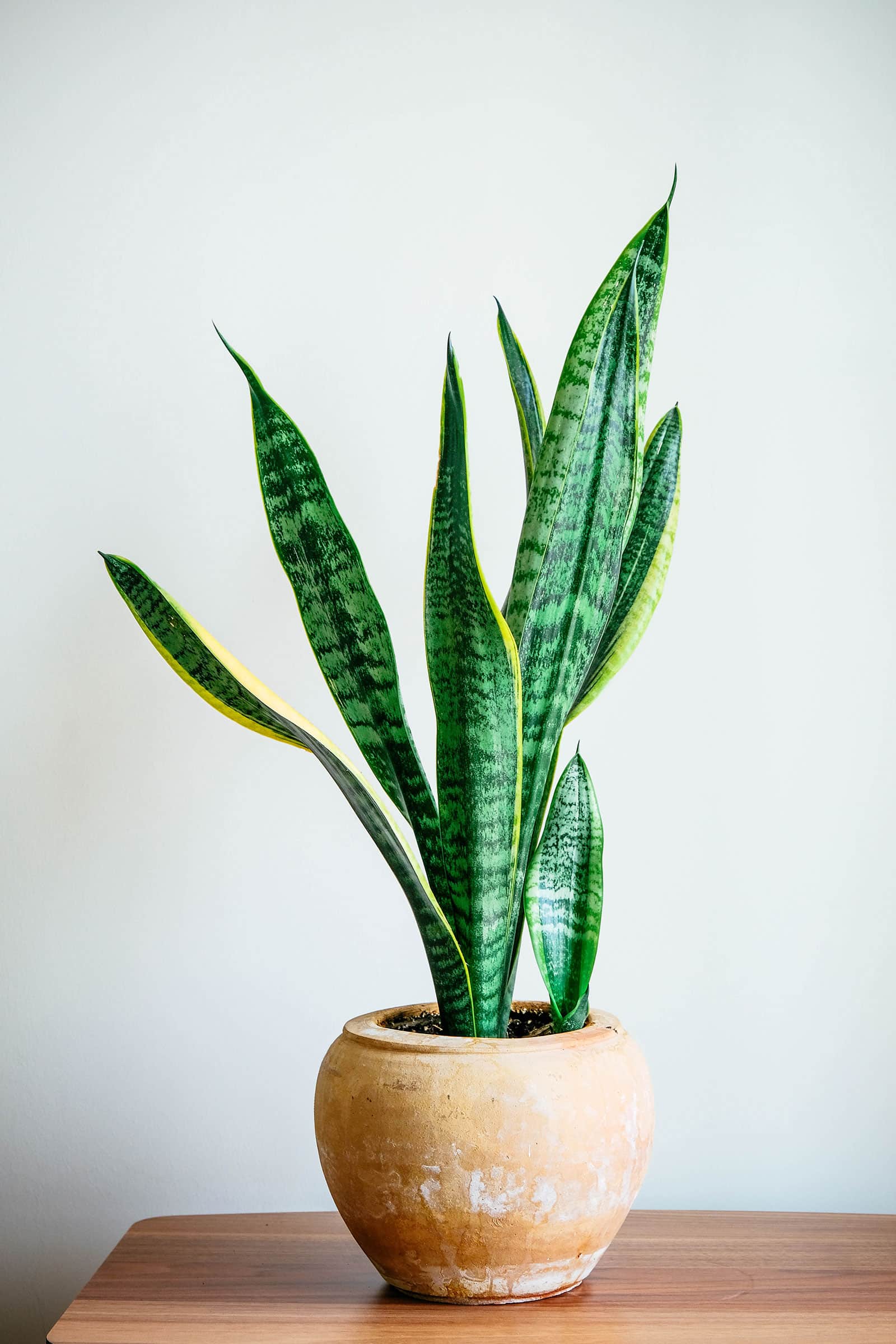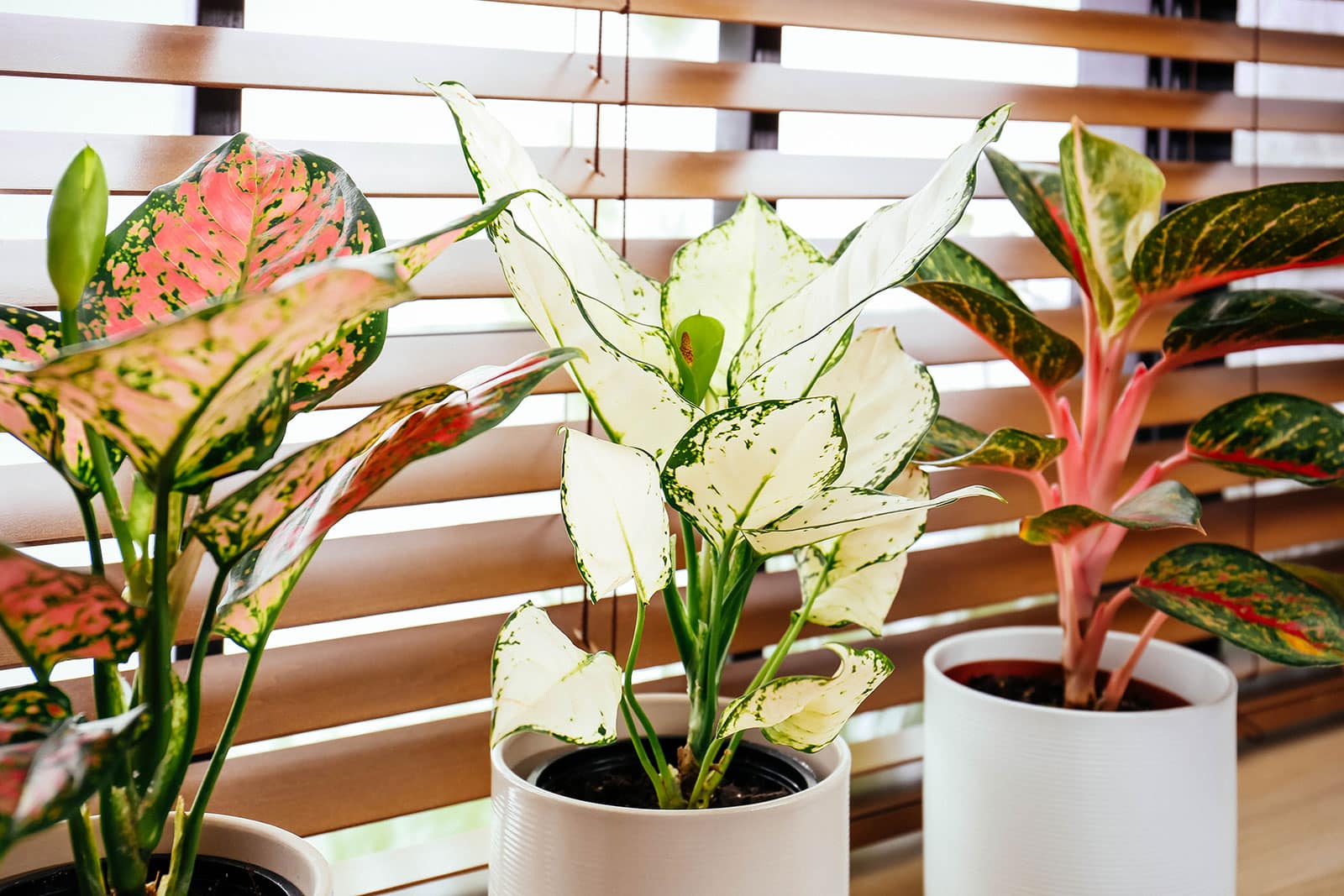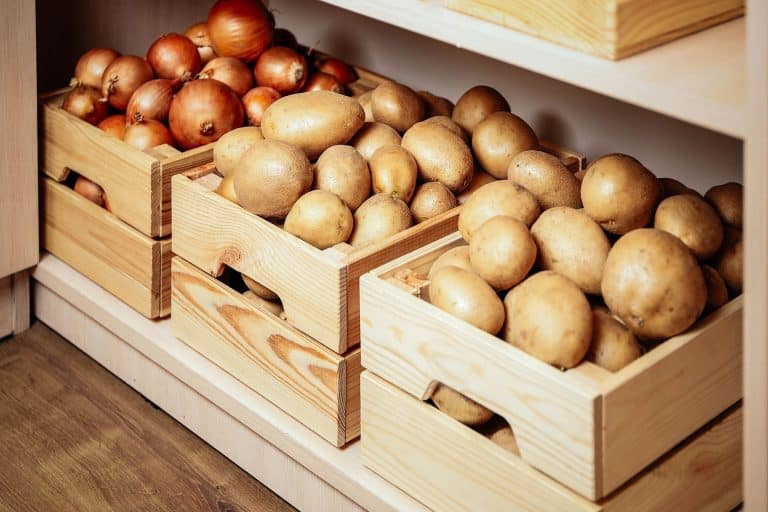Looking to spruce up your home with some lush houseplants, but not sure if it’s too dark?
Fear not: There are species that can make do with very little, and I grow many of them in my own house. So let’s talk low-light houseplants, how to figure out whether your plant is getting enough light, and some handy care tips to keep in mind.
First, what does “low light” even mean?
I’ve found that a lot of sources are pretty deceptive about what “low light” actually means when it comes to houseplants. So before we get into anything else, let’s start off by clarifying this term!
First off—annoyingly—a lot of websites suggest species that actually need quite a bit of light to thrive. This is a bit misleading and will inevitably lead to disappointed houseplant lovers and dead plants.
We’ll correct that later by discussing 10 ACTUAL low-light plants below, all of which I’ve grown in challenging corners of my house.
Secondly, houseplant enthusiasts are being given unrealistic expectations about the definition of low light and just light levels in general.
A windowless bathroom, for instance, isn’t low light—it’s no light! The same goes for a space way across a room that only has a small window, or an unlit nook. In places like these, plants will survive for a while, but they’re always slowly dying.
Even with the certified low-light plants below, it’s important to be realistic. All houseplants require light to thrive. Photosynthesis is just their thing. If you’d like to spruce up a no-light corner without constantly having to replace ailing plants, it’s probably best to look into buying some grow lights (or sticking with faux greenery).
Disclosure: If you shop from my article or make a purchase through one of my links, I may receive commissions on some of the products I recommend.
How to measure light
When I say low light, I mean an area that gets around 100 to 250 foot-candles (FC). This unit for measuring light comes in very handy when you’re trying to figure out whether a spot in your home is light enough to sustain a houseplant.
So you know: 1 foot-candle equates to 1 lumen per square foot.
You can measure foot-candles using a light meter, which is pretty inexpensive to buy (here’s a decent, no-frills model that I recommend) and a great tool to have in your arsenal if you like growing houseplants.
You just hold it over the location you want to place your plant, and it tells you the brightness in FC. If the reading ends up being less than 100, you’re dealing with a “no light” location that isn’t really suitable.
If you don’t want to buy a light meter, there are also phone apps you can use. They’re not very accurate, but they do give you a rough estimation to work with.
Lastly, in case you want to go the non-digital route, you can kind of gauge light levels visually.
Imagine you’re the plant. Do you have a direct line of sight to a window? Is the window less than 10 feet away? If the answers to these questions are yes, then your chosen location is probably suitable for low-light plants. If not, then supplemental artificial lighting will probably be a good idea.
Quick tip
Are you growing a houseplant in low-light conditions and noticing it starting to stretch? When the distance between each leaf becomes larger and larger and a houseplant leans towards the nearest light source, that means things are just too dark.
This phenomenon is called etiolation and it will lead to a sad, limp plant. You may want to look into some grow lights or moving your plant if this happens.
As for higher-light plants, those need to be directly in front of a window, or at least less than 2 feet away. Some, like succulents and cacti, don’t really thrive indoors at all without the use of grow lights. They just need more sun than our puny windows can offer!
My low-light picks that can grow (almost) anywhere

The plants below are what I consider truly low light. The most tolerable I’ve found is Pothos, surviving with at least 50 foot-candles of light, though all of them fall within the 100 to 200 foot-candle range.
Pothos (Epipremnum aureum)

I’ve pretty thoroughly tested the low-light capacities of the humble devil’s ivy vine (better known as Pothos) throughout the years, and it absolutely comes out on top when it comes to low-light houseplants. Some of my poor plants are a whopping 20 feet away from the nearest window and yet they grow pretty well!
Scientifically known as Epipremnum aureum, Pothos is one of the most popular houseplants out there thanks to its unfussy nature. It doesn’t just not care much about light levels, but it’s also beginner-proof and very easy to keep alive.
For the best results, go for one of the darker-leaved varieties, such as the classic golden Pothos (available in any plant store), and avoid variegated types like Marble Queen Pothos (which need extra light since they’re less efficient than green plants at photosynthesizing).
Plant it in well-draining soil with some perlite mixed in for aeration, and water when the mixture has gone about halfway dry. Attach the vines to a plant totem if you want your Pothos to grow larger leaves, or let them hang down for a nice waterfall effect.
Minimum foot-candles to survive: 50 to 100
Heartleaf Philodendron (Philodendron hederaceum)

Also known as Philodendron scandens, the heartleaf Philodendron is a low-maintenance vining plant that, in its original habitat, grows in the shade of trees. It prefers partially shaded locations, making it the ideal low-light houseplant.
In fact, if you give your heartleaf Philodendron more than two to three hours of strong direct sun, the leaves may burn or lose color. So keep it in indirect light to keep it lush and healthy—the plant can survive 50 foot-candles (barely) but will do much better with a minimum of 100 foot-candles. It’ll grow slowly in dimmer environments, but you can help it along by rotating the plant every so often so all the leaves receive some light.
The original glossy green Philodendron hederaceum and the velvety darker-leaved Philodendron hederaceum ‘Micans’ do best in lower-light conditions, while variegated cultivars like Philodendron ‘Brasil’ and ‘Silver Stripe’ will want a bit more light. (My own ‘Brasil’ is on a west-facing window sill in the shower, where it loves the extra humidity.)
Plant in a loose potting mix and water only when the soil feels almost completely dry. (For their size, heartleaf Philodendrons need relatively little moisture and are susceptible to root rot if you water too much.)
Minimum foot-candles to survive: 50 to 100
Sansevieria (Dracaena sp.)

As longtime houseplant enthusiasts may be aware, the various species that used to belong to the genus Sansevieria were moved into the genus Dracaena a while ago following studies that revealed they’re very closely related.
Still, I feel like they’re not one and the same, so I wanted to discuss them separately here.
The plants formerly known as Sansevieria are succulents. They actually prefer to receive lots of direct sun, but the nice thing about them is that they’re very sturdy and can also make do with a lot less. I’ve had good success growing them (especially my favorite, Sansevieria cylindrica) in spots with very limited light.
A Sansevieria, also sometimes called “mother-in-law’s tongue”, makes a fine choice for beginners looking for their first houseplant. As long as you plant yours in a gritty medium and let its soil dry out fully before watering again, there really isn’t much you can do wrong with these unfussy succulents.
Minimum foot-candles to survive: 100
Dragon tree (Dracaena sp.)

Another absolute winner and a total lifesaver for the lazy houseplant lover is the dragon tree, better known as Dracaena.
I have Dracaenas in some of the lower-light spots in my home (up to 10 feet away from a window), and although they don’t tend to grow much, some have stuck it out for years now with no signs of suffering.
The nice thing about this plant is that there are a good few varieties to choose from. Just avoid the lighter-leaved cultivars (like Dracaena marginata ‘Tricolor’, which needs a bit more light) and you’re golden. Dracaena fragrans ‘Compacta’ is probably my personal favorite.
Like Pothos, Dracaena plants are a breeze to care for. Just plant them in a well-draining soil medium and water when the mixture is about halfway dry (which can take a while, especially in winter!). Although a dragon tree kept in low-light conditions will grow very slowly, they can eventually become quite large.
Did you know?
The famous lucky bamboo is actually a species of Dracaena rather than true bamboo: Dracaena sanderiana. Like other dragon tree types, it’s low light-proof.
Minimum foot-candles to survive: 100
Cast iron plant (Aspidistra eliator)

It’s not called that for nothing. Like cast iron, Aspidistra eliator is known to be almost indestructible! That’s probably why it has been around in our homes since all the way back in the Victorian era, when people first started growing exotic houseplants.
Native to Japan, this species has tall, sword-shaped, glossy leaves. It can grow quite large. Combine its looks and size with its ability to survive in low-light conditions, and you’ve got the perfect plant to cheer up some of those corners that are too dark for most other houseplants.
As long as you provide your cast iron plant with a well-draining soil mixture and water it when the soil is about halfway dry, you really can’t go wrong. It doesn’t really care about unstable temperatures, a lack of light, low humidity, or even the occasional watering mistake.
What more could we wish for in a houseplant?
Minimum foot-candles to survive: 100
Satin pothos (Scindapsus pictus)

Also known as the silver Philodendron, this vining plant is neither a Pothos nor a Philodendron (I know, confusing, right?).
It belongs to the genus Scindapsus, which hails from the Asian jungle. You can recognize it by its patterned, velvety leaves. It’s quite a looker!
This ordinarily wouldn’t have been the first plant I’d think of when discussing low-light houseplants, but I confined one of mine to a pretty dark spot around two years ago and I’ve been surprised with its performance. It hasn’t grown much, but it definitely doesn’t look stretchy or sad either. It gets my low light seal of approval.
Although it’s a different species, caring for a satin Pothos is pretty much identical to caring for a true Pothos.
Grow yours in a well-draining soil mixture and water when the soil has gone about halfway dry. You can train it up a totem or trellis if you want it to grow larger leaves over time, or you can let the vines trail down.
Minimum foot-candles to survive: 100
ZZ plant (Zamioculcas zamiifolia)

Another low-light classic! The ZZ plant is a fixture in malls and offices because it can thrive on very little.
Originally from eastern Africa, this species is not a succulent—it’s actually an Aroid—but its leathery leaves and thick rhizomes can store a good bit of water. Like Sansevieria, the ZZ plant is sturdy and doesn’t mind drought or having to make do with less light.
I also personally just love its fabulous looks! Those long stems with shiny, almost feathery-looking leaves really make this species a great centerpiece.
You can plant your ZZ in a well-draining soil mixture. If you’re growing it in low light, let the soil dry out halfway in summer and fully in winter before watering again. Overwatering can cause the tubers to rot, so it’s usually better to under- than overwater these houseplants.
Minimum foot-candles to survive: 150
Peace lily (Spathiphyllum)

Peace lilies are a bit of a controversial subject among houseplant lovers. Some folks just adore them, while others simply can’t seem to keep them alive!
If you belong to the former group, you’ll be delighted to know that this pretty bloomer doesn’t need loads of light to do well. I’ve had a large one in a shaded spot for years now, and despite the lack of light it still produces the occasional flower.
I think the key to keeping a peace lily alive even in low-light conditions is to keep an eye on your home’s humidity. They hail from warm and humid forest floors, so they just really don’t respond well to dry air. Yours might benefit from being grouped together with other plants or the use of a humidifier.
Peace lilies can be planted in regular houseplant potting soil with some perlite. They need consistent watering to prevent their long, sword-like leaves from drooping, but it’s important not to overdo it. Let the first few inches of the soil dry out in summer, and try letting it dry about halfway during winter.
Minimum foot-candles to survive: 150
Chinese evergreen (Aglaonema sp.)

How gorgeous are the many varieties of the Chinese evergreen plant?! Mottled pink, silvery green, stark white and even bright orange… there really is an Aglaonema for everyone.
Although you’re best off choosing a green cultivar for lower-light spots in your home (colored plants need a brighter location), this absolutely doesn’t mean you’ll end up with a boring plant.
A Chinese evergreen will do fine even when placed a bit farther away from the window. It’s just important to make sure you don’t overwater it. I like using well-draining soil and letting the medium go about halfway dry before watering again. (No worries if you’re new to this; here’s a guide I wrote on Chinese evergreen care.)
Some beautiful green Chinese evergreen varieties you could consider for your home include:
- Aglaonema ‘Maria’
- Aglaonema ‘Silver Bay’
- Aglaonema ‘Silver Queen’
- Aglaonema commutatum
Minimum foot-candles to survive: 150
Spider plant (Chlorophytum comosum)

I’m going to wager a guess and say you’re probably familiar with the spider plant. It has been a solid “top 5” houseplant in terms of popularity for years, and it doesn’t look like that’s about to change any time soon. It just looks cool with those striped, grassy leaves—plus, it’s incredibly easy to care for.
Although I wouldn’t classify the spider plant as “ultra-low light” like a Pothos or heartleaf Philodendron, I’ve got to say that I’ve treated mine pretty badly over the years and they’ve always survived. Despite some of them being quite a ways away from the nearest window, they never stopped growing or died off.
Plant your spider plant in regular houseplant potting soil with a handful of perlite mixed in.
If growing in low-light conditions, water the plant when the soil has gone halfway dry. Flush regularly using distilled water, as this species is a little sensitive to the minerals in tap water and can develop brown leaf tips if these are allowed to build up in the soil.
Minimum foot-candles to survive: 200
Caring for low-light houseplants
It’s important to keep in mind that placing your houseplant in a spot that receives less light also means more room for error. It’s just not the ideal situation for them, which causes them to become more sensitive to small mistakes, particularly overwatering.
It can be done, but you do need to be a bit more meticulous about care and watering. Houseplants in darker corners don’t need nearly as much water as their well-lit counterparts. Don’t just water all your plants at the same time without checking whether they actually need it!
Stick a finger in the soil first. If it still feels damp, wait a few more days, or you run the risk of causing root rot.
Just like they need less water, low-light plants also require less fertilizer. They can’t grow as efficiently as plants that get lots of light, so take it easy with the plant food to avoid damaging their roots. (I typically use fertilizer at half-strength for my low-light plants.)
Lastly, houseplants kept in darker rooms are more sensitive to bug infestations and other issues. Check yours regularly for pests like spider mites so you can catch any problems early.
Quick tip
Don’t expect your plant to grow quickly. As an example: My low-light Scindapsus vine has put out a whopping three new leaves in two years. In high-light conditions, it probably could have produced 20.















